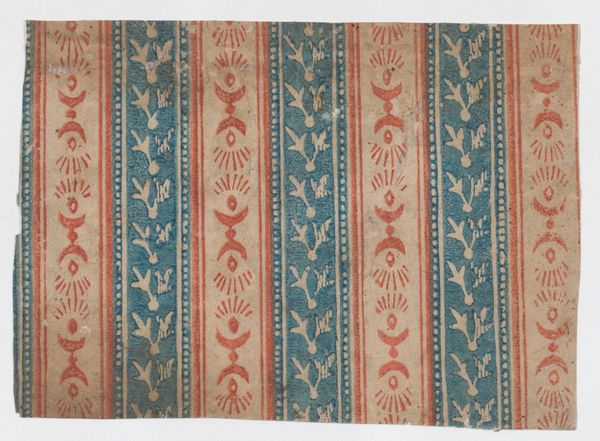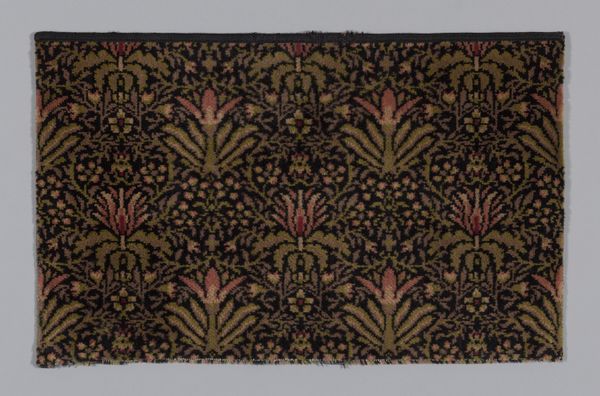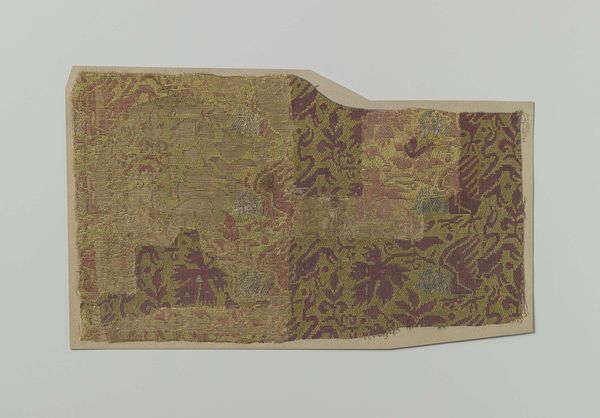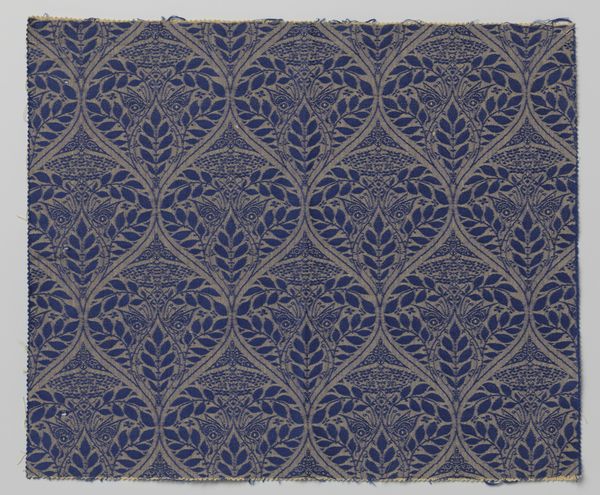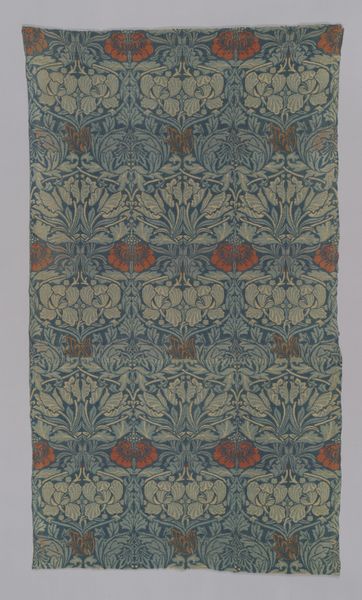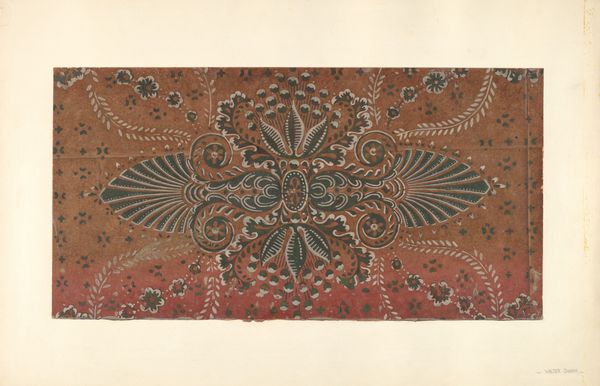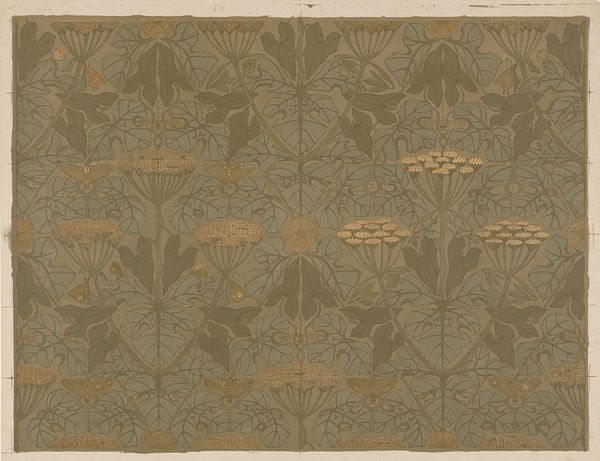
Dimensions: L. 52 1/2 x W. 67 1/4 in. (133.3 x 170.8 cm)
Copyright: Public Domain
Curator: Before us, we have William Morris's "Peacock and Dragon," a woven textile from 1878. Its beautiful repeating pattern is just mesmerizing. Editor: It's really lovely. The overall muted palette creates such a calming effect despite the fantastical imagery. It almost feels like a faded tapestry you’d discover in an old manor house. Curator: Indeed. Morris was deeply invested in challenging the industrial modes of production, wasn't he? He strived to return to handcrafted techniques, like weaving, thus raising the status of artisanal crafts to fine art. The material tells us much about Morris’s ideologies. Editor: Exactly. You see his concern with material honesty and skilled labor. Weaving allowed for that intimate connection between the maker, the material, and the ultimate user. Was this meant for domestic use or display? Curator: I believe that textiles like these would have served multiple functions: wall hangings to provide warmth and sound dampening or as decorative elements draped over furniture to denote luxury and sophistication. Consider that its production also afforded skilled laborers—many women—opportunities for economic independence within the burgeoning Arts and Crafts movement. It's a complex class dynamic at play here. Editor: The peacock and dragon motifs, reflecting a blend of Western and Eastern influences typical of the Orientalism popular at the time, make for quite interesting observations. Those dragons appear quite subjugated. Curator: You have a point. The dragon, traditionally seen as a symbol of power and masculinity in Eastern art, feels somewhat defanged here. Could that imply a subtle commentary on colonial power dynamics? The peacock on the other hand, very commonly a Western symbol of beauty and vanity. Editor: The dragon feels almost domesticated in its placement within the decorative schema. Thinking about material consumption at the time and Morris’ patrons, the inclusion of those "exotic" motifs, they cater to Victorian fascination, without really challenging its ideals. Curator: And it is these tensions—between advocating for social reform and catering to a privileged clientele—that underscore the complex and often contradictory nature of the Arts and Crafts movement. I wonder how it challenges us today. Editor: For me, its reminds me how craft and materiality can embody social and political values. It is an idea that stays so pertinent, raising questions about fair labor, conscious consumerism, and valuing traditional skills.
Comments
No comments
Be the first to comment and join the conversation on the ultimate creative platform.
